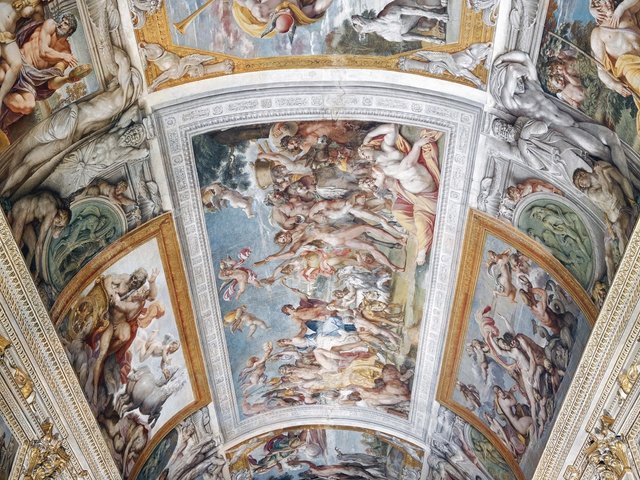Caravaggio: Reflections and Refractions and Caravaggio’s Pitiful Relics can be seen as bolts arcing across the busy field of Caravaggio studies from diametrically opposed corners. The authors of the former, Lorenzo Pericolo and David Stone, identify “an exhaustion and confusion that characterise current scholarship on the master” and expound their solution: “to reconstruct a historical context, to consider avenues of future artistic developments, and to rely on a gamut of well-calibrated methodologies that can be offered only by a solid hermeneutics devoted to the analysis… of 17th-century Italian and other European art”. Meanwhile Todd Olson argues that Caravaggio’s Roman work is a metonymy for the relic. Pericolo and Stone posit Caravaggio as a lens through which to identify the redefinitions of art, the artist’s self-awareness and procedures of art-making that characterise the baroque. Olson’s Caravaggio “lived on the cusp of an era where material signifier and signified collapsed”. Closer inspection reveals that apparent scholarly diversity to be more apparent than real, more a symptom of well-trodden habits in scholarship than their lively antidote. Disagreements are at once amplified yet also ducked in a field where it is still possible to appeal to “a mother lode of sound scholarship” and where recourse to “specific historical context” remains automatic.
Several essays in Reflections and Refractions follow existing scholarship on his “realism”. Caravaggio is also interpreted as immigrant to Rome forced to reinvent himself in emerging art markets. Matters of technique, attributions, and patronage are dutifully explored. While Caravaggio’s engagement with “Counter-Reformation art theory and practice” is not deftly addressed, empathy, sound, touch and Caravaggio’s critical fortunes receive enlivening treatment.
Olson aims to engage the material turn historically. He is an alert interpreter of paintings, attentive to contiguities, structure, colour, innuendo and irony, and to the ways in which Caravaggio’s work resists being grounded in its subject. He provocatively re-engages matter and materials to diagnose Caravaggio’s world as “an arrested present”. Moving bodies are afforded little space; objects assume the burden of narrative. The incidental object, an “obsessively folded” napkin sustains an ambitious project. Olson’s own project is comparable.
Olson relates Caravaggio’s depictions of the socially marginal to the performed lack of artifice in fractures of composition and surface. The abject and material challenge the boundaries of sacred painting and genre scenes. His analysis of elite patronage could be sharpened. The capacities of an elite to remain elite because of its engagement with such issues go beyond “slumming it” to something more significant in socio-political terms. Caravaggio’s tricksters “betray themselves” through bodily materiality, dirty fingernails, coarse gestures. Knowing how to read these depictions of deception was itself a mark of the elite. The Card Sharps, 1594, or the two verions of The Fortune Teller, 1594 and 1595, might be related, not merely to exploring these tensions, but to the way in which an elite positions itself precisely in terms of identifying the difference of difference.
Olson’s Caravaggio remains a transgressor of conventions, but Olson does not. His aims are historicist: “to return the picture to its historical moment”: the “Counter-Reformation”: “Caravaggio’s painting was a response to a set of historical pressures in which martyrdom, iconoclasm and archaeology overlapped in the figure of the relic during the Counter-Reformation”.
Olson argues that Caravaggio’s work is inflected through the discourse on relics, and its double, iconoclasm (violation of the material image): “The ruin of a martyr’s body and the violation of pictorial organisation by formal homology constituted a devotional practice”. The relic is central here. Martyred figures struggle between wholeness and fragmentation. The argument depends on the homological claim that saint and painting were pitiful relics facing “imminent destruction”. Olson’s insistence that relics are “ruins”, violations and “fragments” overlooks their peculiar capacity to be whole and part simultaneously. Martyrs and relics were not merely “fragments”, but witnesses, glorified in Heaven, part of a material promise of redemption.
Both these new books make useful contributions to the field. The question remains whether the contributions might have been deeper and more illuminating had they not been framed in terms of the individual canonical artist.
*
o Todd P. Olson, Caravaggio’s Pitiful Relics, Yale University Press, 288pp, £45 (hb)
*
o Lorenzo Pericolo and David M. Stone, eds,Caravaggio: Reflections and Refractions Ashgate, 392pp, £75 (hb)
Originally appeared in The Art Newspaper as 'Caravaggio: diametrically opposed contexts in conflict'



